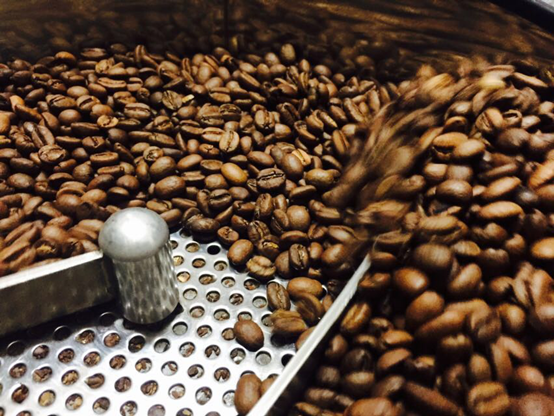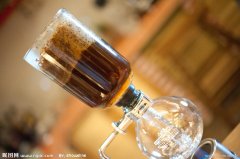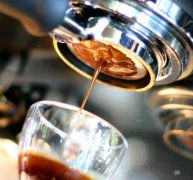The History of Coffee Market in China the time point of coffee development history

The Oriental Enlightenment of Coffee
This article comes from the Timeline 14:30, August 22, 2012.
Big players from mature markets, together with growing new forces, are drawing a unique ecological picture of the brown powder drink in China.
[fan Jing / Wen] in the early winter of 1985, Chen Baoqing, who works in Kraft, walked quickly into a foreign hotel in Beijing in the cold wind. He has visited 96 such foreign-related organizations non-stop-with the creamy aroma of Maxwell coffee.
But in China at that time, Chen Baoqing faced a completely blank market: the average person in developed countries consumed more than 100 cups of coffee a year, while 10 Chinese drank less than one cup. However, Kraft believes that with China's reform and opening up on track and an increase in the number of business people, the future coffee market will be considerable. They have carefully prepared beautiful gift wrapping, and 80% of the coffee sold by McDonald's are such gift boxes, which are good gifts for the Chinese.
Almost at the same time, the Swiss company Nestl é also saw this emerging market. In the 1980s, instant coffee, owned by the two food giants, became one of the most vivid and fragrant memories of that era. "delicious" and "Didi is fragrant and full of meaning" are almost the opening remarks of the initiation of coffee education in the mainland. Chinese people who are new to coffee are resistant to black coffee, which is popular in Europe and the United States. as a result, Nestl é launched a bitter-free 1-to-2 mixed coffee and demonstrated its blending method in advertisements. In the sweet taste of the cream companion, the Chinese coffee journey begins.
Nearly 30 years later, the status of instant coffee remains unshakable. But the image of coffee in China has now been turned upside down. Coffee has long gone beyond the meaning of brown powder drinks in glass jars and has been interpreted as a cultural phenomenon of emotion and tone.
And this meaning continues to subvert. Last year, Wang Jinlong, former president of Starbucks China, admitted that "China is in transition, and coffee culture has gradually changed into coffee consumption." Chinese mainland, which has more than 700 stores, plans to add about 150 stores in China this year and operate at least 1500 stores in China by 2015. At that time, China will become Starbucks' second largest market after the United States. In just 30 years, China has almost completed the transformation of the European market for more than a century.
But in fact, China has not lagged behind the three waves of coffee experienced by the European market. Since instant coffee, espresso represented by Starbucks and Costa has gradually formed the second wave, while the faint rise of boutique coffee is in the ascendant. Whether they are big players from mature markets or growing fresh faces, they are depicting a unique coffee ecology for China.
Elite game
In the first decade, instant coffee was almost synonymous with coffee, until a group of Taiwanese transplanted bright window tables, comfortable seats and coffee pots with brown bubbles to the mainland. In the 1990s, Shangdao Coffee and carving time, best known to mainlanders, appeared on the scene. Shangdao Coffee defines the business function of coffee. At that time, drinking tens of yuan a cup of coffee in the soft coffee shop was undoubtedly a luxury, and only business businessmen were willing to pay for it.
The early cafes were indeed a thankless business. When Chuang Tsai, a Taiwanese, opened his first sculpture time near the Halloween Book Garden at Peking University in 1997, he had no idea where to buy a coffee maker and coffee beans. At that time, there were very few coffee makers in China, so they could only ask people everywhere for inquiries. It didn't take long for the first coffee machine to break down, and Chuang Tsai discovered that what he bought at a high price turned out to be secondhand.
In the first few months, the cafe had only a handful of customers every day. In order to attract guests, Chuang Tsai began to show movies in the store, and the works were of a small taste, which coincided with the position of the coffee shop-- the main guests were students and teachers from Peking University and Tsinghua University. "in my feeling, it smells like the left bank of the Seine." Chuang Tsai said to the Timeline.
Different from the business demands of Shangdao, the literary and artistic style revealed everywhere in the carving time intoxicated the petty-bourgeois youth. Since then, small cafes of different styles have sprung up, and most people who run cafes, like Chuang Tsai, are usually driven by a complex rather than a commercial drive.
In this period of coffee trend, coffee culture has always been a top-down pyramid spread. Businessmen bear the cost of cafes, while students act as pioneers of coffee culture. Many cafes choose to open near universities, where young people are willing to accept new things.
Unfortunately, this brief romance was soon overwhelmed by a stronger trend, and when another group of Taiwanese swam across the sea with Starbucks mermaids, American-packaged espresso will reshape the coffee taste of the Chinese in an irresistible way.
The third space
In 2005, Wang Jinlong returned to Starbucks as president of Greater China, six years after Starbucks opened its first store on the mainland. His earliest resume at Starbucks was in 1992, when Starbucks opened its first store in 1987, when there were only 150 to 160 stores in the United States. But in the same five or six years, Starbucks has more than 400 stores in Greater China.
The "third space" built by Starbucks around the world has become the reason for people to be infatuated with it. "in such a space, people's relationships are free and equal, without a sense of hierarchy in the workplace and without the shackles of various roles in the family, people can release themselves."
Compared with the previous small cafes, Starbucks has built a perfect social and identity space. For the first batch of senior white-collar workers who patronize Starbucks, Starbucks has become "standard" for some kind of identity: high-income, tasteful and in line with international standards. Take Shanghai, the home of foreign companies, as an example: Starbucks' sales in Shanghai reached 100 million yuan in two years after opening its first store on Shanghai's Huaihai Road in 2000.
Customers who know nothing about coffee but are curious can also feel relaxed at Starbucks. It has a stylish decoration and a comfortable atmosphere, but it is not as aggressive as other literary cafes. This is the kind of atmosphere Starbucks strives to create. It thoughtfully considers the habits of Chinese customers, such as Chinese consumers who prefer to eat in or near their stores, so most Starbucks stores in China offer more food and seats than in the United States. Considering that Chinese people like hot food, each store also has an oven, which makes Chinese customers who are used to drinking coffee in the afternoon or evening begin to patronize frequently in the morning.
Wang Jinlong certainly understands that Chinese people don't come to Starbucks for coffee, they just want to get a high-profile experience. But he did not give up on the popularization of consumer knowledge. On the counter where Starbucks provides cream and sugar, there are pamphlets such as "making coffee common sense" and "what is espresso". Occasional Starbucks classrooms have coffee masters to teach customers how to taste coffee, as well as more formal coffee tasting parties.
The success of Starbucks has encouraged onlookers, including fast food giant McDonald's and British coffee chain giant Costa. McCoffee appeared in McDonald's restaurants in Beijing and Shanghai in 2010, with better prices and better taste than Starbucks in the United States. Costa launched in China in 2008, and its stores are expanding aggressively thanks to the real estate advantages of its manager, Beijing Hualian.
Unlike Starbucks' fast-food coffee, Costa hopes to provide a more refined experience. Its coffee in white porcelain cups and more soft sofas will make people "feel more upscale." In addition, it also has a richer tea drink, which may come from the British tea culture, but it is obviously also applicable to China.
There is no doubt that foreign giants represented by Starbucks have shaped the development of Chinese coffee in the past decade. Coffee culture has not only become popular, but also become more human and life-like for Chinese people. People fall in love with coffee because they are infatuated with coffee shops, and the places and ways of drinking coffee are also enriched.
Important Notice :
前街咖啡 FrontStreet Coffee has moved to new addredd:
FrontStreet Coffee Address: 315,Donghua East Road,GuangZhou
Tel:020 38364473
- Prev

Who knows the history of coffee? The time point in the history of coffee
There are different legends about the origin of coffee. Among them, the most common and popular story is the Shepherd's Coffee. Legend has it that there was a shepherd who happened to find his sheep jumping and dancing while herding sheep. If you look carefully, it turns out that the sheep ate a kind of red fruit that led to their funny behavior. He tried to pick some of these red fruits and boil them, but he didn't want to.
- Next

Development history of coffee machine A brief history of coffee machine development in Italy
At the beginning of the 20th century, an impatient engineer living near Napoli, Italy, was impatient with dripping coffee for too long, so he came up with a way to make coffee in a high-temperature and high-pressure way to shorten the time, so he invented the world's unique Italian coffee for quick cooking, and Espresso became popular. This impatient project
Related
- How did the Salvadoran coffee industry develop in Central America?
- What exactly does the golden cup extraction of coffee mean?
- The Origin of Coffee flower
- [2023 Starbucks World Earth Day] there are more meaningful things besides free Starbucks coffee!
- What kind of coffee is there in Spain? 9 Flavors of Spanish Coffee
- Aromatic African coffee| Kenya's coffee culture and historical production area
- Liberica Coffee Bean knowledge: the characteristics of Liberian Coffee beans of the three original species of Coffee beans
- The origin and formula of Spanish latte introduces the taste characteristics of Bombon coffee in Valencia, Spain.
- How to adjust the solution of over-extracted coffee
- What is the tasting period of coffee beans? What is the period of coffee and beans? How should coffee wake up and raise beans?

